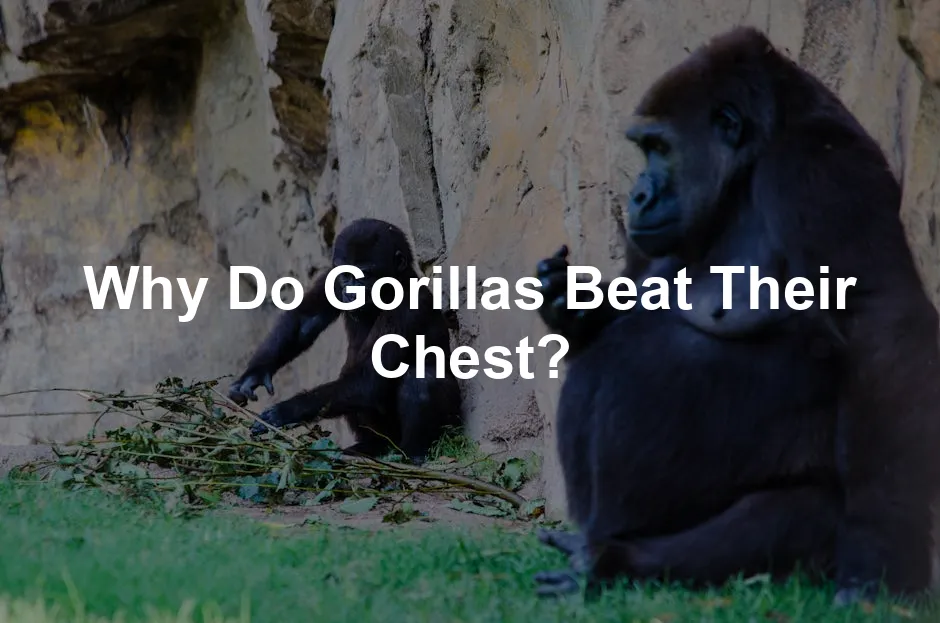
Why Do Gorillas Beat Their Chest?
Introduction
Gorillas, especially male silverbacks, are famous for their chest-beating displays. This iconic behavior plays a crucial role in their social interactions and communication. Understanding these chest beats helps us appreciate the intricate dynamics within gorilla groups. Let’s explore the reasons behind this fascinating behavior and its significance in gorilla society.
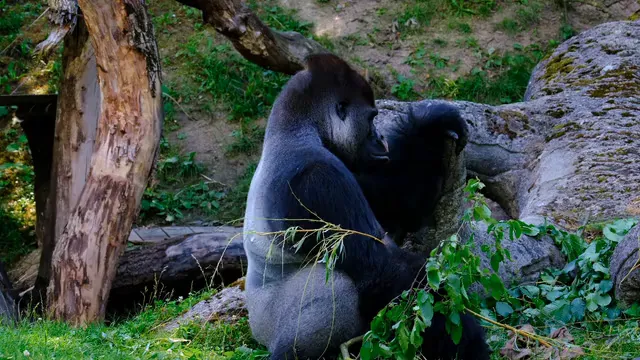
Summary and Overview
Gorillas are highly social animals that thrive in family groups. Communication among group members is vital for maintaining harmony and order. Chest-beating serves multiple functions: it signals dominance, attracts potential mates, defends territory, and fosters social interaction.
This rhythmic pounding not only showcases strength but also conveys information about body size, crucial for establishing social hierarchies. Recent studies reveal that larger gorillas produce lower frequency beats, which serve as honest signals of their size and power. These acoustic properties enhance nonvocal communication, allowing gorillas to convey important messages over long distances.
Understanding chest-beating behavior also informs conservation efforts. It fosters respectful human interactions with gorillas and highlights the need for protective measures in their habitats. By appreciating these unique behaviors, we can contribute to gorilla conservation and ensure the survival of this magnificent species.
If you’re fascinated by wildlife, you might enjoy a Gorilla Documentary DVD. It offers an in-depth look at these incredible creatures and their natural behaviors, making it a perfect addition to your collection!
Effective communication is essential in various contexts, including overcoming fears like glossophobia. why does effective communication matter in overcoming glossophobia
Functions of Chest Beating
Communication and Display of Dominance
Chest-beating is a powerful nonverbal signal in gorillas. It showcases strength and authority, particularly among male silverbacks. When a silverback beats its chest, it sends a clear message to rivals: “I am strong and not to be challenged.” This display often prevents physical confrontations by establishing dominance without a fight.
In gorilla groups, social hierarchies are crucial. Dominant males use chest-beating to assert their position. This behavior helps maintain order within the troop. Research shows that larger males tend to beat their chests more deeply, signaling their size and strength effectively. In a study of mountain gorillas, it was found that these chest beats can be heard over a kilometer away, enhancing their reach in dense habitats. This acoustic signaling aids gorillas in avoiding unnecessary conflicts.

For those who appreciate the beauty of wildlife, a Wildlife Photography Book would be a great addition to your coffee table. It captures the essence of nature and its inhabitants, inspiring awe and appreciation for the wild.
Attracting Mates
For male gorillas, chest-beating serves as a courtship display. Males utilize this behavior to showcase their fitness and vitality to potential mates. A strong chest beat indicates health and strength, qualities that female gorillas find attractive.
Research indicates that females often choose mates based on these displays. The more impressive the chest-beating, the higher the chance of attracting a female. A study noted that male gorillas that frequently beat their chests had greater reproductive success. This behavior thus plays a significant role in both attracting mates and ensuring genetic diversity within groups.
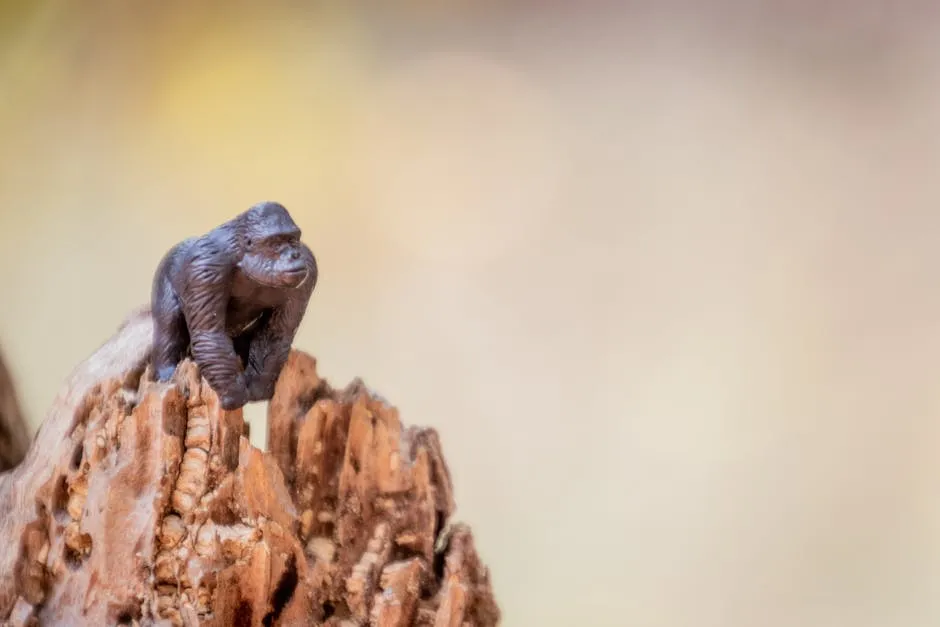
While we’re on the topic of fitness, why not enhance your workout with Chest Workout Resistance Bands? They’re perfect for building strength and improving your fitness routine.
Territorial Defense
Chest-beating is also vital for territorial defense. When a gorilla beats its chest, it communicates its presence to rival groups. The sound acts as a warning, signaling that the area is claimed and defended. This reduces the likelihood of direct confrontations, which can be harmful.
Statistics reveal that gorilla groups often engage in fewer physical disputes when chest-beating is utilized effectively. By announcing their dominance through sound, gorillas can deter challengers and maintain peace within their territories. This behavior not only conserves energy but also enhances group stability, making it an essential aspect of gorilla social behavior.
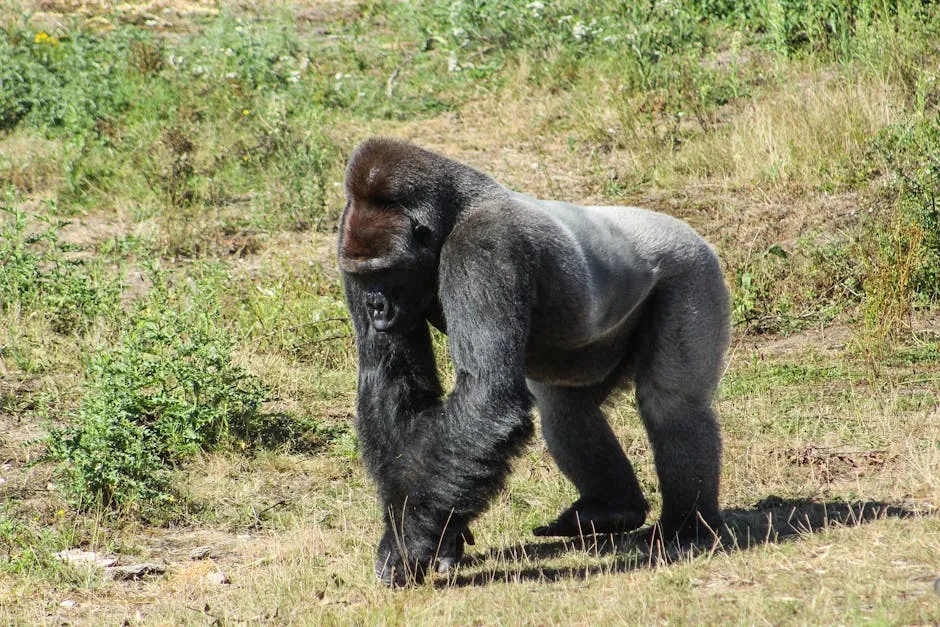
Are you planning an outdoor adventure? Don’t forget to pack a Portable Camping Hammock. It’s the perfect way to relax and enjoy nature after a day of hiking!
Social Interaction and Learning
Younger male gorillas and infants often engage in chest-beating during play. This behavior is not just amusing; it’s a vital part of their social development. Through playful chest-beating, young gorillas learn essential social skills. They practice asserting themselves within the group and navigate their social hierarchies.
Observations from various studies highlight these interactions. For instance, juvenile gorillas beat their chests while playing, mimicking adult behaviors. This imitation helps them understand their environment and the dynamics of their social structure. The feedback from older gorillas during these playful displays reinforces learning and helps establish roles within the troop.
By engaging in chest-beating, they also learn about competition. Younger males can gauge their strength against peers, preparing them for future challenges. This playful behavior is crucial for their growth and understanding of social norms.
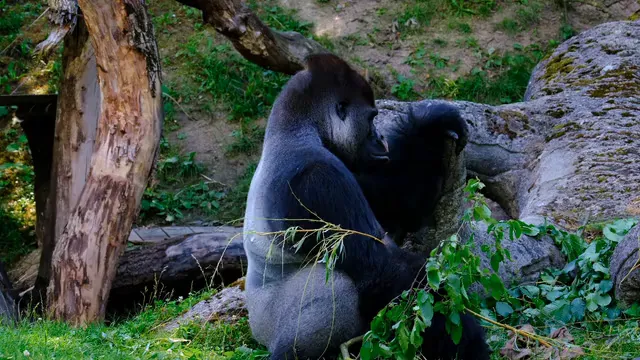
Emotional Expression
Chest-beating in gorillas is not solely about aggression. It can also signify excitement or agitation. For example, gorillas may beat their chests during moments of joy, such as during playtime or when greeting a family member. This behavior showcases their emotional range and underscores their intelligence.
Beyond aggression and mating, chest-beating occurs in various contexts. Gorillas may engage in this behavior when they feel threatened or excited by a new experience. This emotional expression is a testament to their complex social lives.
Research indicates that gorillas possess significant emotional intelligence. Their ability to express excitement or agitation through chest-beating reflects their understanding of social interactions. This behavior fosters connections between individuals, enhancing group cohesion and emotional bonds. Recognizing these expressions in gorillas deepens our appreciation for their intricate emotional landscapes.
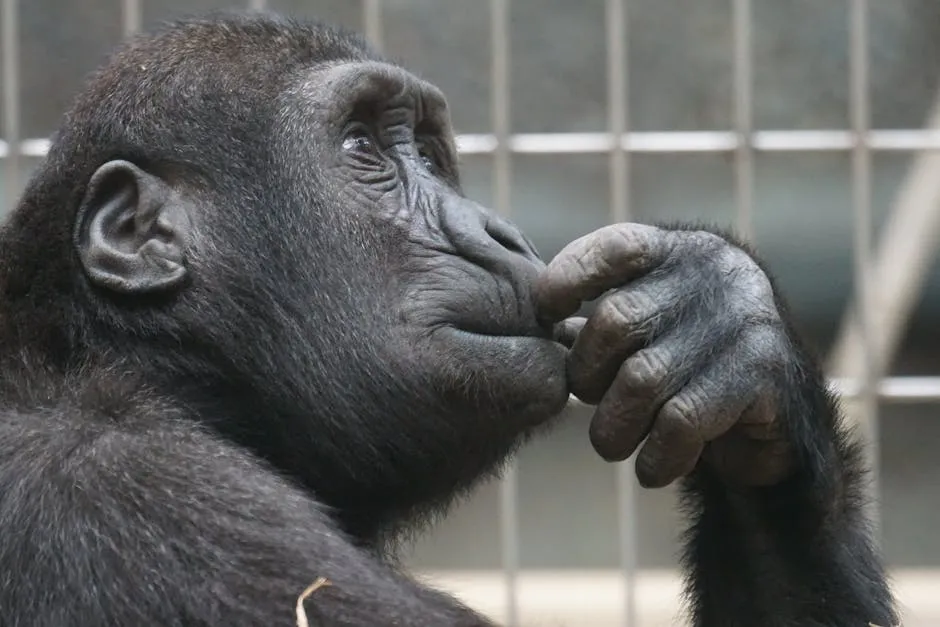
Mechanics of Chest Beating
Gorillas perform chest-beating with cupped hands, striking their chests in rapid succession. This technique amplifies the sound, making it resonate throughout their environment. The timing and posture of these displays play a crucial role in how they communicate.
Larger male gorillas produce deeper sounds compared to their smaller counterparts. Studies reveal that the size of a gorilla influences the acoustic properties of their chest beats. This is due to larger air sacs near their larynx, which create richer tones. The frequency and duration of chest beats also vary among individuals.
For instance, one study observed that larger males emitted chest beats with lower peak frequencies. This difference provides vital information about their body size and strength, which is essential for social interactions. The average male might beat his chest only 1.6 times every ten hours, but this rhythmic display holds significant meaning. Each chest beat acts as a powerful, nonverbal signal, conveying identity and strength to other gorillas.
Variability Among Species
Gorilla chest-beating varies significantly among subspecies. Mountain gorillas exhibit this behavior more frequently than lowland gorillas. For instance, in dense forests, mountain gorillas rely on powerful chest beats to communicate over long distances. This helps establish territory and communicate social status.
Lowland gorillas, on the other hand, often use vocalizations and gestures. Their environment allows for different interaction methods. Factors like habitat density and social structure influence how often chest-beating occurs.
Environmental conditions play a role too. In areas with more vegetation, sound travels differently, affecting how gorillas communicate. In contrast, open habitats may lead to fewer chest-beating displays, as vocalizations become more effective.
Understanding these differences enhances our appreciation for gorilla behavior. It highlights the importance of their habitats in shaping communication methods.
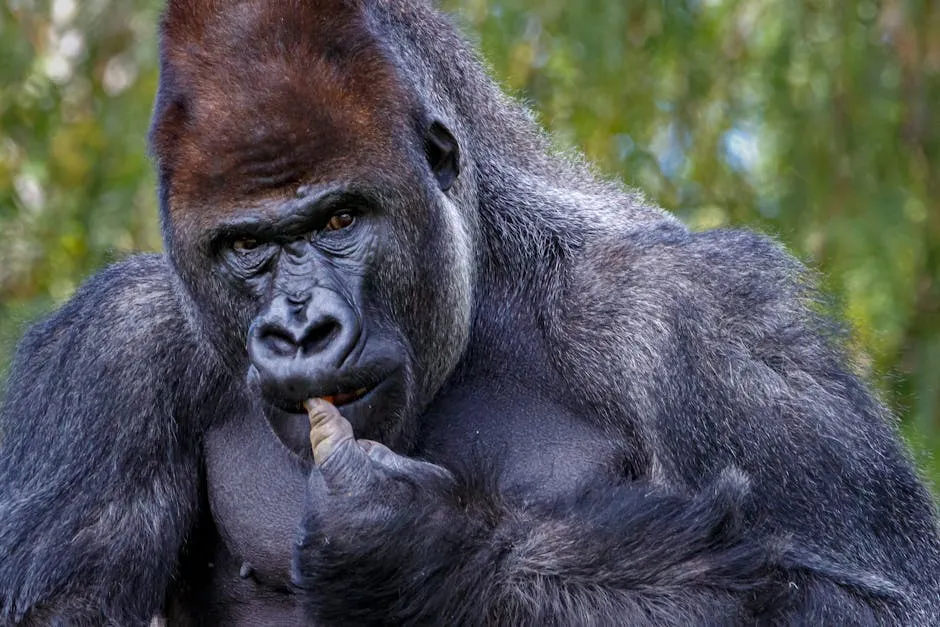
Implications for Conservation
Understanding Behavior for Conservation Efforts
Knowledge of gorilla communication is vital for conservation. By understanding chest-beating, conservationists can better protect these animals. This behavior indicates their social dynamics and helps identify stressors in their environment.
Respectful human interactions with gorillas are crucial. When people recognize these signals, they can avoid actions that disturb these magnificent creatures. Awareness fosters better relationships between humans and gorillas, essential for successful conservation efforts.
Conservation programs increasingly rely on this understanding. Organizations utilize gorilla behavior knowledge to develop strategies that protect habitats and promote coexistence. For example, tourism initiatives educate visitors on proper conduct around gorillas, minimizing stress on these animals.
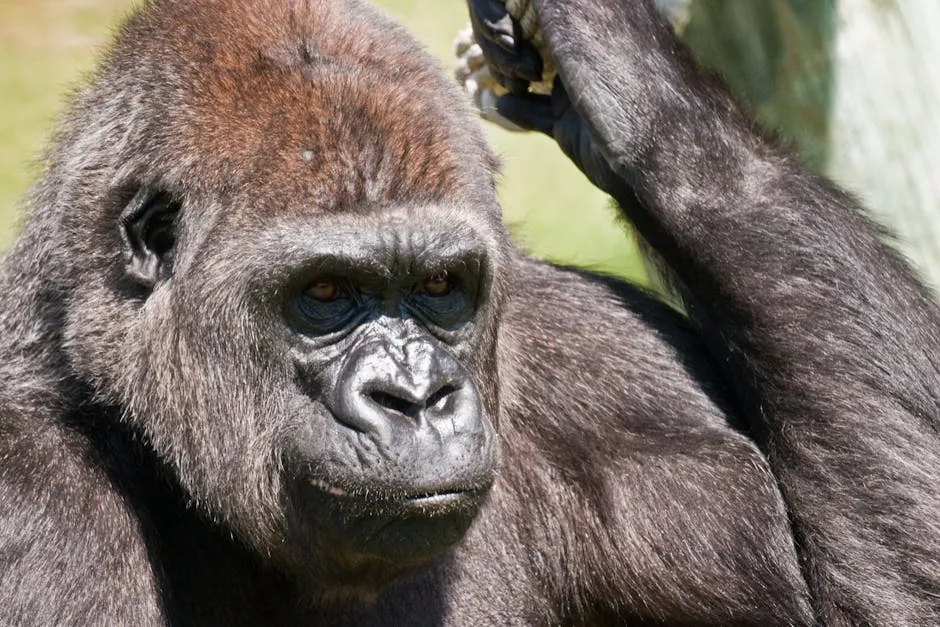
If you’re an outdoor enthusiast, consider carrying a Hiking Backpack. It’s essential for carrying all your gear while exploring the great outdoors!
Future Research Directions
There are many exciting areas for future research. One potential focus is the relationship between chest-beating and social structures. Researchers might study how different displays affect group dynamics.
Additionally, examining the nuances of chest-beating can reveal more about individual identities. Understanding how each gorilla’s beats differ could provide insights into their social standing.
Finally, ongoing research may uncover the impact of environmental changes on these behaviors. As habitats evolve, observing how gorillas adapt their communication could lead to valuable conservation strategies.

Conclusion
Gorillas beating their chests is a fascinating behavior with several important functions. It’s not just a display of strength; it has deep implications for communication and social dynamics within gorilla groups. Chest beating signals dominance and helps establish hierarchies among males. Additionally, it plays a significant role in attracting mates and defending territory. This behavior also fosters social interactions, allowing younger gorillas to learn from adults.
Understanding the complexity of gorilla behavior enriches our appreciation for these incredible animals. Supporting conservation efforts is crucial to ensuring their survival and protection in the wild. By recognizing their unique communication methods, we can foster respectful interactions and promote their conservation.
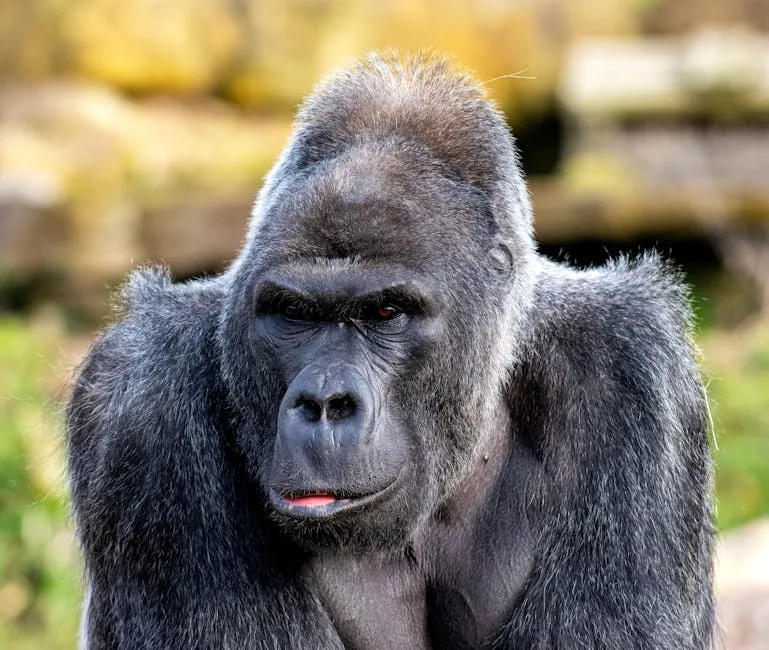
And while you’re at it, why not enjoy a cozy evening with a Animal Print Blanket? It’s perfect for snuggling up while you watch your favorite wildlife documentaries!
What does it mean when a gorilla beats its chest?
When a gorilla beats its chest, it can mean several things. Typically, it’s a display of dominance, signaling strength to rivals. It also serves as a mating display to attract females. Additionally, chest beating can indicate a threat, warning others to back off.
Can females also beat their chests?
Yes, female gorillas can beat their chests, but they do so less frequently and with less intensity than males. Their chest beating often occurs during playful interactions or social bonding, rather than as a display of dominance.
How far can a gorilla’s chest beat be heard?
A gorilla’s chest beat can be heard over a kilometer away, especially in dense forests. This long-distance sound travels effectively, allowing gorillas to communicate vital information about their presence and status to others.
What should you do if a gorilla beats its chest near you?
If a gorilla beats its chest nearby, it’s essential to remain calm and avoid sudden movements. Do not mimic the behavior, as it may be seen as a challenge. Follow the guidance of trained guides if you encounter gorillas in the wild.
Are chest beats unique to individual gorillas?
Research suggests that chest beats may have unique characteristics, similar to fingerprints. Each gorilla’s chest-beating patterns can vary in frequency and intensity, potentially serving as individual signatures that convey their identity to others.
Please let us know what you think about our content by leaving a comment down below!
Thank you for reading till here 🙂
All images from Pexels




